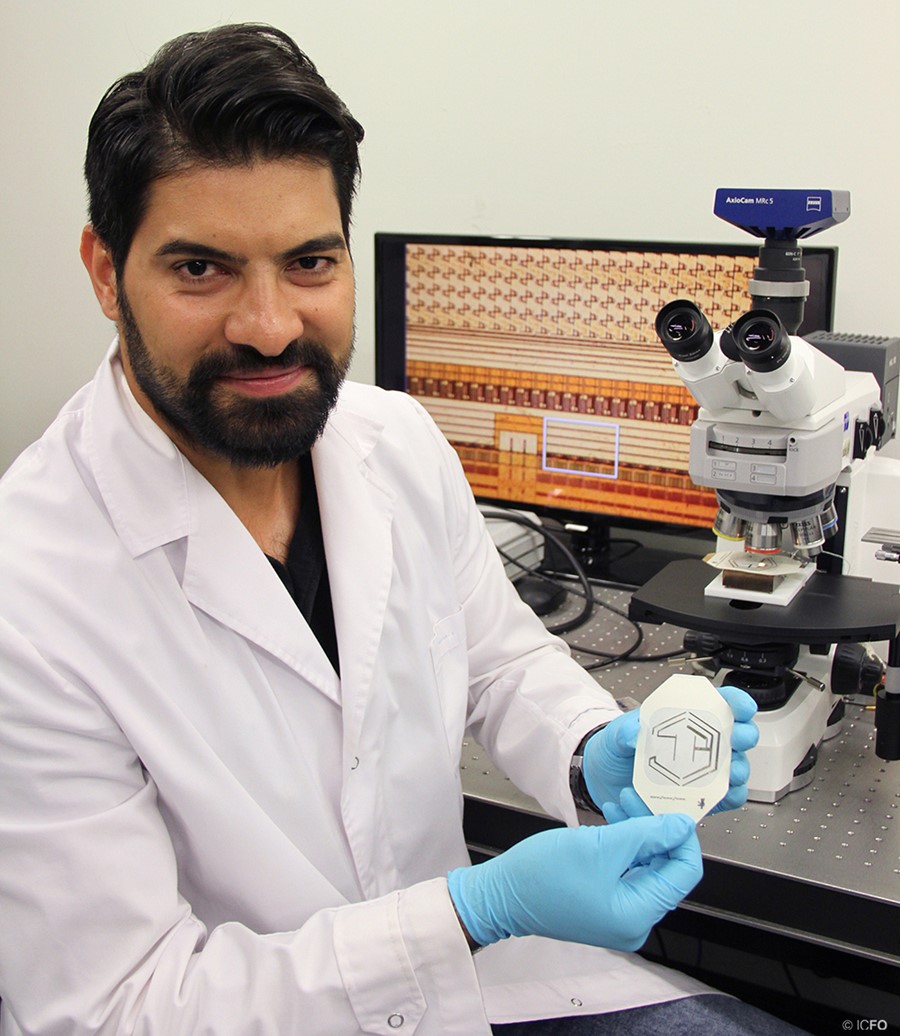Spotlight: Emre Ozan Polat
The Graphene Flagship spotlight series tells the stories behind the research. Emre Ozan Polat is a postdoctoral researcher at ICFO (The Institute of Photonic Sciences, Spain) and is part of the team that created a graphene-quantum dots health-tracking medical patch.
Emre Ozan Polat talks to the Graphene Flagship on the eve of his presentation at the Grand Finale of Berlin Falling Walls Lab Competition where he will compete with 100 other aspiring scientists, researchers and innovators from more than 50 countries to become the Falling Walls Young Innovator of the Year 2017.
UPDATE: Emre talks about the Falling Walls Lab Grand Finale at the end of this article.
Tell us about your postdoctoral research and the creation of the health-tracking patch containing graphene-quantum dots.
I joined the Quantum Nano-Optoelectronics research group at ICFO (The Institute of Photonic Sciences, Spain), which is led by ICREA Professor Frank Koppens just over a year and a half ago. As a postdoctoral researcher I work on the study of graphene photodetectors and I am also part of the Graphene Flagship. The research group works on integrating novel two-dimensional materials with silicon-based technologies, developing new techniques for improving photodetectors and imaging systems and searching to understand, at a more fundamental level, how light interacts with these new materials under extreme conditions to maximize their properties.
Along with my colleagues from my research group as well as the research groups led by ICREA Professors at ICFO Gerasimos Konstantatos and Turgut Durduran, we discovered that the properties of these new materials, namely graphene and quantum dots, could be used for flexible and thin devices aimed at health applications. The high transparency and excellent electrical conductivity of graphene, paired with the light absorption of quantum dots, motivated us to work towards the development of a flexible semi-transparent, health patch that could monitor fitness parameters. At the moment the patch is able to measure the heart rate and arterial oxygen saturation, but in the future we expect to be able to measure other vital signs as our body hydration, temperature, UV exposure, among others. We are turning the current photodetector technology into a tattoo-like patch, by integrating these quantum materials on thin and flexible substrates to develop this smart medical patch.
The first prototype of the patch was exhibited back in February 2017 at the Mobile World Congress in Barcelona as part of the Graphene Pavilion (organized by the Graphene Flagship and GSMA and curated by ICFO) but now we have developed a more evolved prototype of the patch.
The Falling Walls Lab Competition was set up to celebrate the most innovate research ideas that aim to change the world of tomorrow. You recently won first place in the national round of this competition, Falling Walls Lab Barcelona, organized by DTIC-UPF and FECYT. Can you talk a little about this day and what you presented?
At Falling Walls Lab Barcelona, organized by FECYT and DTIC-UPF, I presented this Graphene-Quantum dots health-tracking patch along with the more evolved prototype. I was up against 12 other candidates presenting diverse topics ranging from the use of water as a fuel source, to a gaze-controlled music interface or dyslexia and I won first place.
In my allotted 3 minutes, I explained to a prestigious jury from science and business why this health patch could become a disruptive technology and make a major improvement in today and tomorrow’s society. The development of this low-cost medical patch could provide a thorough picture of a person’s vital signs and therefore become an excellent tool to monitor common medical complications such as heart diseases, or dehydration, among others. Attaining mass-scale production of this device would definitely reduce its cost of fabrication, having an important impact in developing countries, where health care systems are in desperate need of low-cost, point-of-care, efficient devices that could improve people’s quality of life and prevent life threatening emergencies.
The final round of Falling Walls (held 8-9 November 2017 in Berlin) sees you present this technology in front of an audience of 600 in the hope of becoming the Falling Walls Young Innovator of the Year 2017.
I am thrilled to go to Berlin and present this innovative technology to an important audience of decision makers from leading innovation companies and distinguished representatives of renowned scientific institutions. While my goal is to bring home the first place prize, raising awareness and possibly finding investors to mass-produce the devices, once a final prototype is achieved, would represent a great victory.
What was the outcome of Falling Walls Lab 2017?
What next for the technology?

Dr. Emre Ozan Polat



